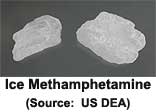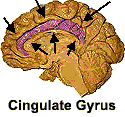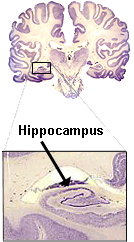 | Methamphetamine Alters Brain Structure |
 | Methamphetamine Alters Brain Structure |
 |
July 29, 2004 Methamphetamine is an addictive drug that stimulates the central nervous system. This drug can injure the brain by damaging neurons that use the neurotransmitters called dopamine and serotonin. New research from the UCLA School of Medicine shows that chronic methamphetamine use is associated with brain abnormalities. Dr. Paul Thompson led a team of scientists who used magnetic resonance imaging (MRI) to compare the brains of 22 methamphetamine users to those of 21 control subjects. People in the methamphetamine group had used approximately 3.4 grams of the drug each week for an average of 10.5 years. |
 |
 |
MRI of methamphetamine users showed three significant brain
abnormalities:
These brain abnormalities may help explain the depression, paranoia and memory problems experienced by chronic users of methamphetamine. For example, the cingulate gyrus, a part of the limbic system, is important for emotional and cognitive behavior; the hippocampus has a role in memory. The unexpected increase in white matter volume around the hippocampus may be caused by an increase in myelin around axons or an increase in the number of glial cells produced in attempts to repair brain injury. Further research is needed to determine if methamphetamine-induced brain abnormalities are associated with changes in neurotransmitter levels. Other studies might examine how therapy for methamphetamine abusers can reverse the abnormal brain changes. |
 |
| Reference and
further information:
|
| GO TO: | Neuroscience In The News | Explore the Nervous System | Table of Contents |
![[email]](./gif/menue.gif) Send E-mail |
 Fill out survey |
 Get Newsletter |
 Search Pages |
 Take Notes |